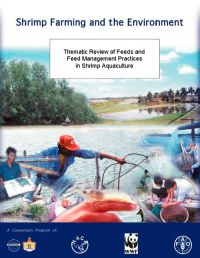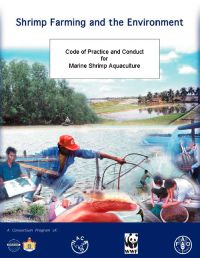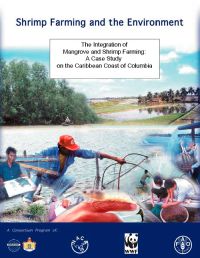This paper reviews feeds and feed management practice in shrimp aquaculture and assesses the trends and environmental implications of feed use. Particular attention is given to the use of fish meal in shrimp diets and water pollution caused by feeds. The review identifies practices at farm, manufacturing and ecosystem levels that can reduce environmental impacts associated with the use of shrimp feeds. Trends in the use of alternative ingredients to replace fish meal are also considered.
The rapid expansion of marine shrimp aquaculture in many tropical developing countries has proceeded without effective environmental regulation. Most countries with shrimp farming do not have an established regulatory apparatus to monitor and enforce environmental and socioeconomic standards. Therefore, voluntary codes of conduct are a possibility for improving overall management and possibly profitability of the marine shrimp aquaculture industry until effective governmental regulation is implemented. This paper reviews the status of existing codes of conduct for shrimp farming.
Various substances in shrimp farm ponds can contaminate waters, including nutrients, metabolic wastes, veterinary chemicals, and suspended soil particles from erosion. This report discusses ways to monitor these aspects of water quality, which is important from two standpoints for shrimp farmers. Incoming water used top supply shrimp ponds must be healthful and free of toxins to protect the growing shrimp, and effluent must be clean enough to avoid harming aquatic ecosystems and water quality standards downstream.
Shrimp aquaculture has been accused of threatening mangrove forests worldwide. Mangrove and shrimp ponds are known to have mutually supportive functions. Mangrove wetlands can treat effluents from shrimp ponds effectively by removing suspended solids and nutrients. This activity can be expected, in turn, to enhance mangrove productivity. This report describes an integrated mangrove wetland–shrimp farm operating in Colombia since 1996. At this site, shrimp farm effluent is recirculated through an 120 ha mangrove area.
This report discusses the recent history of shrimp aquaculture along the Caribbean coast of Colombia, with a focus on effective management practices that have been implemented since the mid-1990s. While the primary reason for using different practices has been preventing outbreaks of shrimp diseases, many such practices provide environmental benefits as well. Examples include reducing the use of water and ensuring that effluent entering natural water bodies is at least as clean as the intake water.




